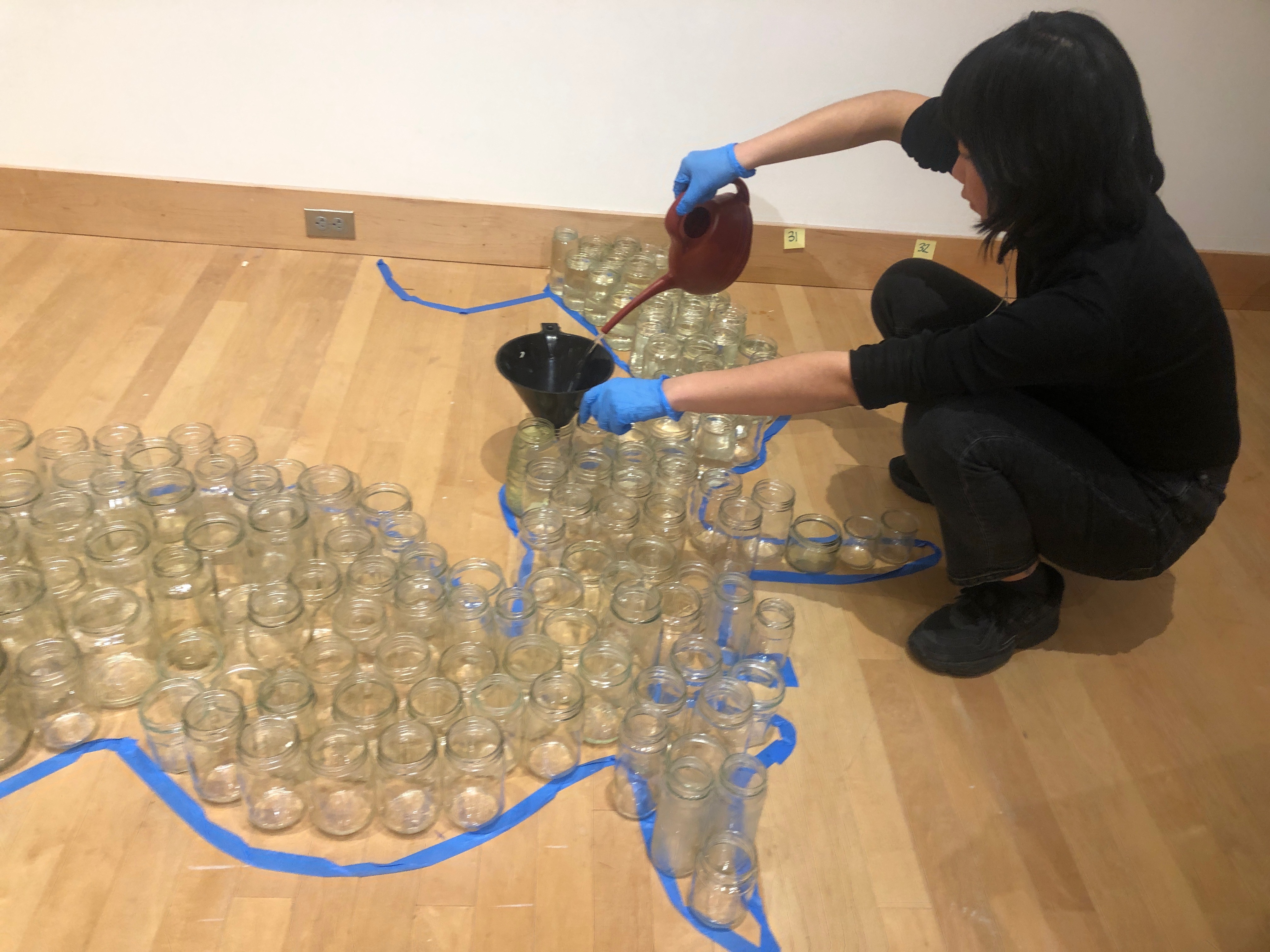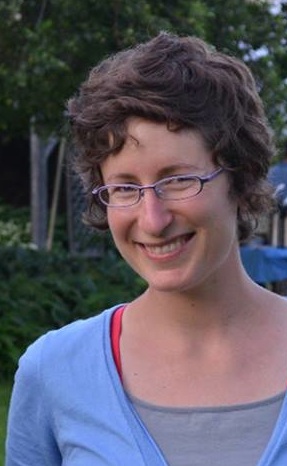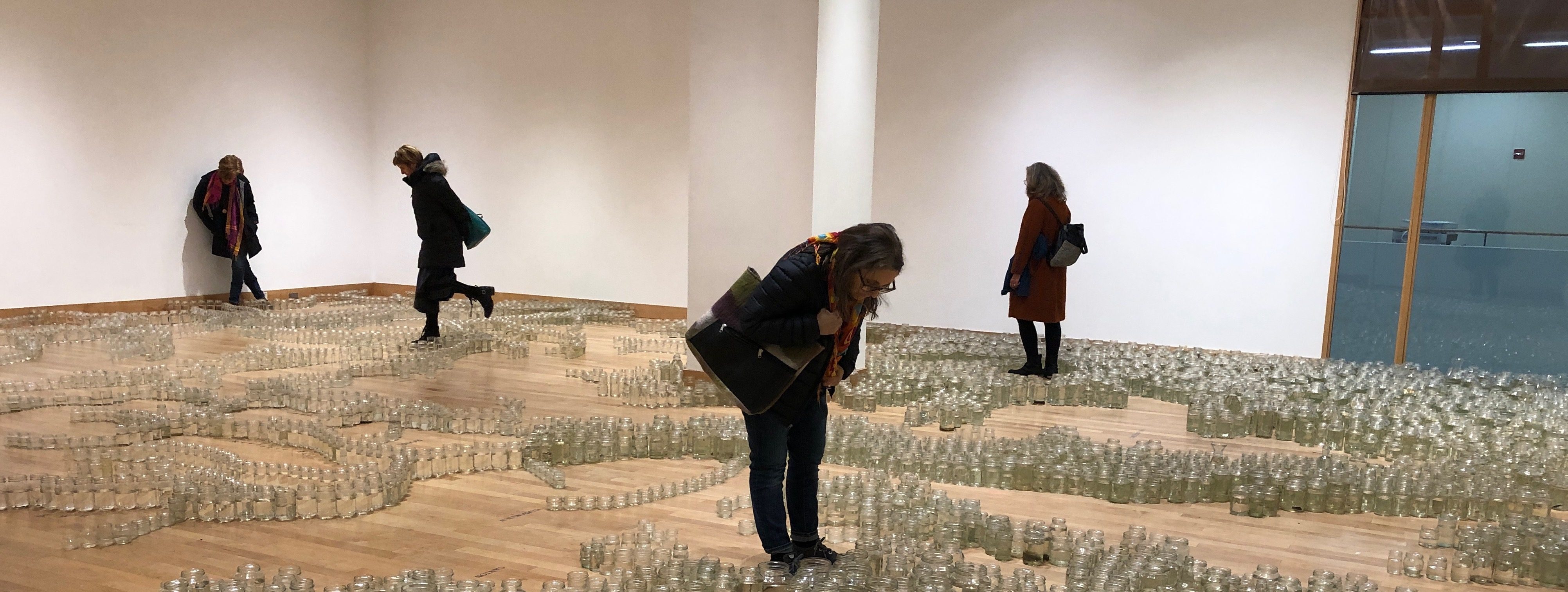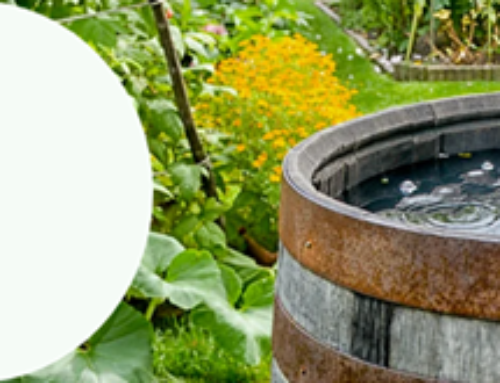Towson, Maryland, February 18, 2020— Earlier this year, environmental artist Stacy Levy kicked off an interdisciplinary eco-art adventure with Towson University students and faculty, a process that brought participants up close and into contact with the myriad creeks, rivers, and runs that make up their campus watershed. For over a week, collaborators studied maps, learned to read urban and suburban landscapes, and used 5-gallon buckets to collect more than 1,000 gallons of water samples from over forty Chesapeake Bay tributaries. Now, those samples fill 8,500 recycled glass jars to create a living water map branching across the floor of the University’s Center for the Arts Gallery.
“It’s a very involved process,” Levy notes. “Locating the tributaries can be difficult—we’re often working with waterways that have been sent underground, or that run behind strip malls and invisibly through our neighborhoods. We all become water detectives searching out these hard-to-see waterways.” Back at the gallery the work continued, as Levy and her collaborators carefully placed jars along blue masking tape on the gallery floor, mapping the shape of the many waterways surrounding Towson, from Gunpowder Falls in the north to Jones Falls in the south. Then, over the course of many days, participants filled those jars with water from the corresponding streams and tributaries.
Why do all this work? The project is a chance to tell the story of the Chesapeake Bay in a truly interdisciplinary way: Biology faculty and students joined the artist when she collected water, testing water quality and studying algae in each stream. Music students captured the sounds of the different waterways, from rural runs to urban streams. The Office of Sustainability donated collecting buckets and helped to collect samples. Art History and Art Department students got to experience all the steps of a site-specific installation project. This interdisciplinary focus is reflected in programming and events held across campus throughout the exhibition.
“Collected Watershed” also provides the chance to ask pressing environmental questions. “This project felt really germane to our gallery and the Baltimore area in general, because water is so important here, and so much of it is underground,” says Erin Lehman, lecturer and director of the Holtzman MFA and Center for the Arts Galleries, pointing to issues like water justice, paying water bills, storm runoff, and crumbling infrastructure causing pollution in local creeks and tributaries. But on an even more basic level, the installation aims to bring to the forefront waterways that are often hidden and forgotten. “Our waterways are like capillaries across the land, carrying water from sky to sea,” notes Levy. “The same branching pattern as our blood vessels, the watershed carries the life blood of our planet. Nowadays we know our roads far better than our waterways. By not knowing where the water flows, we fail to protect it.”
Protecting our waterways and finding beauty in them might go hand in hand. “When people come to the gallery, they will see something they didn’t expect to see,” Lehman says. “It’s not art on the wall. What they will see is unexpected lyrical beauty. It’s so many jars, and it’s so beautifully laid out. It shows the beauty of what’s in the gallery, but also a representation of what’s underfoot all the time.”
Experience “Collected Watershed” at the Center for the Arts Gallery from Jan. 31 – April 25. For more information, visit towson.edu/campus/artsculture/centers/artsgallery.html, or call Stacy Levy at (814) 360-4346 or e-mail stacy@stacylevy.com.
 Abby Minor
Abby Minor
Abby Minor lives in the ridges and valleys of central Pennsylvania, occupied Lenape land, where she works on poems, essays, paintings, and projects for social and environmental justice. She holds a BFA in American Studies with a focus in maritime studies from Smith College and an MFA in Creative Writing from Penn State. In addition to her work as a community art and writing teacher, Abby is the Founding Director of Ridgelines Language Arts.






